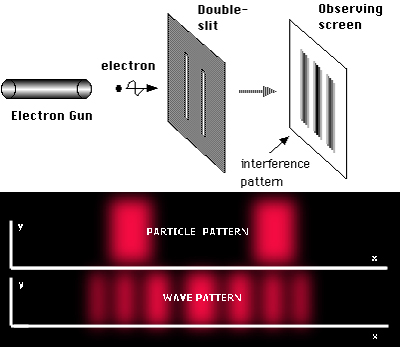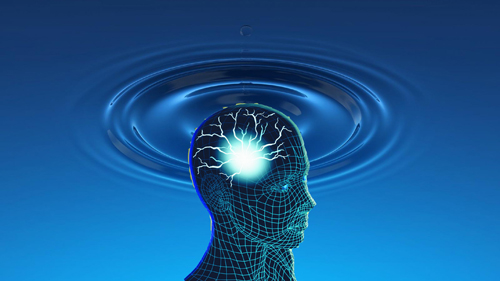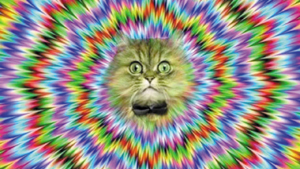
Your complimentary articles
You’ve read one of your four complimentary articles for this month.
You can read four articles free per month. To have complete access to the thousands of philosophy articles on this site, please
Radical Theories of Consciousness
Does Consciousness Cause Quantum Collapse?
Kelvin McQueen asks whether minds could directly influence physical reality.
It is widely acknowledged that there is a problem of explaining how subjective, conscious experience could arise out of physical matter. The focus is generally on the matter-to-consciousness direction. But there is an equally puzzling problem going in the other direction. What causal effects does consciousness have on physical matter? In short, what does consciousness do?

A popular view in philosophy of mind is physicalism. Physicalists believe the mind is just the brain. So for example, a particular experience, such as an itch, or a visual experience of red, would be nothing more than electrochemical processes in the brain. A less popular view is dualism. Dualists believe that mind and brain are distinct. On this view conscious experience is something in addition to the brain processes that accompany it, something non-physical.
Physicalists believe dualism has been refuted by modern science. They claim that all our evidence shows that the physical world is a causally closed system, and hence there is no room for non-physical minds to do anything. For example, a conscious desire for beer causes Jones to go to the fridge. Jones’ going to the fridge involves a large mass of particles being set in motion. If dualism were true then those particles would have been moved by something non-physical. But in the physical sciences the laws governing particle motion do not leave room for such outside forces to move particles about. Hence, dualism is false. This is known as the causal closure argument.
But a careful analysis of modern physics suggests things are not so simple. After the discovery of quantum mechanics, several prominent physicists suggested that consciousness does play a fundamental role in governing particle motion. To see why they made this suggestion we must first understand the problem they were trying to solve: the measurement problem.
The Measurement Problem
The orthodox formulation of quantum mechanics can be found in a 1932 book by John von Neumann. It is puzzling because read literally, it postulates two fundamental laws of nature that appear inconsistent. Firstly, there is the law described by the Schrödinger equation. This law is deterministic: the Schrödinger equation enables one to calculate the exact physical state of a system (i.e. its wavefunction) at a later time given that system’s physical state at some earlier time. Secondly, there is the law described by the collapse postulate. This law is not deterministic but probabilistic: the collapse postulate only assigns probabilities to the possible future states of a physical system given its current state. (These probabilities reflect objective randomness in nature.)
No physical system can be governed by both these laws simultaneously, since no physical system can evolve deterministically and non-deterministically at the same time. This raises the question, under what conditions is a physical system governed by each law? Orthodoxy provides a way out of this potential inconsistency: a system will evolve deterministically in accord with the Schrödinger equation if and only if it is not being measured; and a system will evolve non-deterministically in accord with the collapse postulate if and only if it is being measured. However, it isn’t clear what exactly is meant by ‘measured’, hence the name ‘measurement problem’.
This problem is exacerbated when considering the physical states of quantum systems. Measurement does not merely make the measured system suddenly evolve in random ways; it appears to change the very nature of the system. For quantum mechanics does not typically describe particles as being located at definite points in space. Instead it allows a single particle to be located at multiple locations at once. In such cases we say that the particle is ‘in a superposition of multiple locations’. When one measures the location of the particle, its superposition is said to ‘collapse’ such that the particle randomly jumps to just one location. This is illustrated in the notorious double-slit experiment.
The Double-Slit Experiment

In this experiment electrons are fired one by one towards a fluorescent screen. When an electron strikes the screen, the spot where it hits lights up, allowing us to measure the location of the electron. In the actual experiment, the path to the screen is blocked by a wall with only two thin slits in it. After many electrons are fired towards the wall, the pattern of spots that builds up on the fluorescent screen is not two bands of spots corresponding to the two slits, as one might expect. Rather, it is an interference pattern (roughly, many bands of spots, making the screen look like the body of a zebra). Even stranger, if we place additional measuring devices at the slits, to measure which slit each electron goes through, then we find each particle going through just one slit but we also then find just two bands of spots on the fluorescent screen corresponding to the two slits, rather than the interference pattern we saw before.
To understand the orthodox account of these results an analogy may help. Imagine partially submerging this experiment in water. Rather than firing particles toward the screen, we drop a rock, sending a water wave towards the screen. What happens when the ripple hits the wall with the two slits? Some of it is deflected backwards, but two new ripples emanate from each slit and travel towards the screen. As these two new ripples spread out they hit each other, before hitting the screen. If the screen is designed to detect intensity of water waves, the ripple collision will affect the pattern on the screen. This is analogous to how orthodoxy explains the interference pattern.
Consider the trajectory of a single electron. It is shot towards the wall. As predicted by the Schrödinger equation, it fans out (like a ripple). It then has a component emanating from one slit and a component emanating from the other slit: the electron is in a superposition of going through both slits. These two components then fan out and interact (interfere) with each other. The electron then enters into a superposition of hitting multiple locations on the screen. These multiple locations correspond to an interference pattern.
One spot lighting up on the screen is a measurement of one electron’s location. During measurement the collapse postulate takes over from the Schrödinger equation. Accordingly, the spread of superpositions stops and the electron randomly collapses to a single location on the screen, leaving just one spot on the screen for us to see. So one electron cannot create the interference pattern. But as we send more electrons through, an interference pattern builds up. If we now place additional measuring devices at the slits, then each electron collapses early and so only goes through one slit. If the electrons are not in superpositions of going through both slits, then there is no interference, and so no interference pattern.
Measurement therefore appears to do two things: it changes the very nature of physical systems by converting their ‘wave-like’ superpositions into familiar ‘particle-like’ states; and it causes genuinely random behaviour in what is measured (since the wave-to-particle transition is random).
The ‘Consciousness Causes Quantum Collapse’ Hypothesis
Why is this a problem? The reason is that measurement does not look like a good candidate for a fundamental physical process – what exactly counts as a measurement? So, many have tried to do without the collapse postulate entirely, and just let superpositions spread in accord with the Schrödinger equation. This means that after just one electron is sent through, the screen enters into a superposition of detecting a single electron in multiple places. The human observer then looks at the screen and enters into a superposition of experiencing a spot at one point on the screen, a spot at another point, and so on. Advocates of this view interpret this as the human observer splitting into multiple observers, each of whom sees a different spot. Since each interacts with the environment, the environment bifurcates too. This is the so-called many-worlds interpretation of quantum mechanics, which has become rather popular among physicists. Although consistent with physicalism, this is a radical hypothesis. However, any solution to the measurement problem is bound to have radical implications.
Another line of thought retains but revises the collapse postulate. Now, the orthodox formulation of quantum theory offers the most powerful algorithm for predicting experimental results in the entire history of physics. So however we revise it, we must be careful to keep that predictive power. That means ensuring that collapses happen when they need to (e.g. before an observer forms a visual experience of the screen) and don’t happen when they shouldn’t happen (e.g. unmeasured electrons do not typically collapse during their journeys through the double-slit apparatus).
One way of doing that is to retain the collapse postulate but replace ‘measurement causes collapse’ with ‘conscious observation causes collapse’. This idea was suggested by several physicists in the early days of quantum mechanics. In 1939 Fritz London and Edmond Bauer wrote: “A measurement is achieved only when the position of the pointer [or the spot on the fluorescent screen] has been observed. […] We note the essential role played by the consciousness of the observer in this transition.” Inspired by London and Bauer, the Nobel Laureate Eugene Wigner wrote in 1961: “When the province of physical theory was extended to encompass microscopic phenomena, through the creation of quantum mechanics, the concept of consciousness came to the fore again: it was not possible to formulate the laws of quantum mechanics in a consistent way without reference to consciousness.”
However, this basic suggestion was never fully developed. Instead, it was taken down scientifically unhelpful mystical paths and is nowadays typically dismissed by physicists. There are, I think, three main reasons for why physicists dismiss it:
Objection 1
The notion of ‘consciousness’ is poorly defined. The hypothesis cannot solve the measurement problem since ‘consciousness’ is as poorly defined as ‘measurement’. Accordingly, it cannot offer any new testable predictions.
Objection 2
Physical descriptions should not vary according to who the observer is. This is especially so in light of the fact that observers are relatively new to the universe – it took billions of years for the first animal to appear on Earth. This hypothesis violates that requirement.
Objection 3
The hypothesis is not consistent with physicalism, the reigning foundational assumption in philosophy. It instead requires some sort of obsolete mind-body dualism that has been refuted by philosophers.
These are reasonable objections. However, in light of recent developments in neuroscience, I believe they can be answered.

The new ripple effect (only joking!)
Responses To The Objections
Recent research in neuroscience suggests that consciousness is correlated with brain regions whose neurons are acting together in an orchestrated manner. Compare the cerebellum with the cerebrum. The cerebellum contains far more neurons, but does not significantly correlate with consciousness (e.g. it can be removed without causing much damage to one’s stream of consciousness). The cerebrum contains relatively few neurons, but is significantly correlated with consciousness. What’s the key difference? Well, probe a subregion of the cerebellum and it has little consequence for other cerebellum subregions. In contrast, probe a subregion of the cerebrum and it will disrupt what’s happening in other subregions of the cerebrum. Some neuroscientists believe that a mathematically precise measure of this type of causal interconnectivity will define the physical correlates of consciousness. Such a formula would enable us to measure, for any possible physical system, whether it is conscious and to what extent.
To respond to the objections, we can stay neutral on the correct measure of this interconnectivity – we only need the assumption that there is a correct measure. But it will be useful to have an illustration on the table. According to Guilio Tononi’s Integrated Information Theory (IIT), the correct measure is a measure of a physical system’s integrated information (Φ). [For a detailed account of the Integrated Information Theory and the Φ measure of consciousness, see Hedda Hassel Mørch’s article in this issue.]
So let’s use this idea to reply to the objections to the ‘consciousness causes quantum collapse’ hypothesis:
Response to Objection 1
This objection demands testable predictions from the hypothesis. By incorporating IIT, our ‘consciousness causes collapse’ hypothesis becomes the hypothesis that integrated information (measured as Φ) causes collapse. Crucially, Φ is a mathematically precise quantity that can in principle be calculated for any possible physical system. So our hypothesis now generates precise and distinctive experimental predictions.
Consider again the double-slit experiment. This experiment has demonstrated interference patterns when firing complex molecules such as Buckminsterfullerene (each composed of sixty carbon atoms) through the slits. Physicists are working on experiments with ever more complex systems being fired through the slits. One could imagine eventually running the experiment twice, with two different groups of nanocomputers. Members of one group are programmed with high Φ. Members of the other group (the control group) are programmed with little or no Φ. If only the latter group yield an interference pattern, then (if IIT is true) the consciousness causes collapse hypothesis will have been experimentally confirmed.
Response to Objection 2
The second objection demands that there be only one objective description of reality, not a distinct (yet equally valid) description for each observer. This challenge is met because the hypothesis only entails that the description of reality sometimes changes over time due to the presence of Φ. This change of description over time is objective because all observers should agree on it.
One reason for wanting physical descriptions to not depend on observers is that we want physics to describe the early universe before there were any observers. It may look like our hypothesis entails that the universe suddenly collapsed as soon as Earth began to sprout conscious creatures. This would be problematic for various reasons. Fortunately given IIT, this is not an implication. For IIT rejects the anthropocentric idea that consciousness is a property only of humans and human-like creatures. Even individual atoms and molecules have tiny amounts of Φ. Provided they are not components of systems with higher amounts of Φ, IIT entails that they have small amounts of consciousness. So quantum collapses can be expected to have happened fairly early on in the universe’s history, although their strength and frequency would have been less back then. (Although the details are beyond the scope of this piece, a fully consistent theory will require that the strength and frequency of collapse is proportional to Φ.)
Response to Objection 3

Schrödinger’s Cat reemerges!
There are two possible responses to the objection that our hypothesis is not physicalist, given that both physicalist and dualist interpretations of our hypothesis are available. The physicalist interpretation immediately meets the physicalist demand! On the physicalist interpretation, consciousness is not mentioned at all. Instead, it is the physical correlate of consciousness (Φ) that causes collapse. The laws then state that it is systems with sufficient Φ which trigger quantum collapse. This is consistent with physicalism.
However, there is something awkward about the physicalist interpretation. Φ is not a fundamental property of matter, it is a high-level property of many causally interconnected components. Formulating a fundamental law of nature in terms of a non-fundamental high-level property seems odd. But even worse, why is the high-level property that brings on collapse also the correlate of consciousness? On the physicalist interpretation, this looks like a bizarre coincidence. Such considerations push us towards the dualist interpretation on which consciousness is fundamental.
On the dualist interpretation, consciousness, not Φ, causes collapse, and Φ is just a measure of consciousness. This interpretation will have to reject objection 3 somehow, perhaps by showing that it rests on a fallacy. And there is reason to think it does. Many physicists reject the dualist interpretation simply because it depends on an idea – dualism – that is widely viewed as a discredited relic of Descartes’ quaint 17th Century theories. We can formulate the argument that has supposedly discredited dualism as follows:
(1) Everything that happens in the physical world can be explained in terms of physical causes.
(2) Therefore, it is impossible for non-physical consciousness to cause anything to happen in the physical world.
This leads us either to physicalism, or to the unpalatable conclusion that the mind has no impact on the physical world: one’s thoughts do not cause one’s words, one’s pain does not cause one to cry out. Many philosophers see this as a powerful argument against dualism.
Philosophers support (1) with the claim that physical theories never have any need to appeal to consciousness in their causal laws. But what physical causes account for collapse? We don’t know, so (2) isn’t actually supported. There is therefore a curious phenomenon in which physicists reject the dualist interpretation by appeal to philosophy and then proceed to formulate physicalist solutions to the measurement problem (e.g. the many-worlds interpretation); meanwhile philosophers reject dualism by appeal to such physical theories (and in particular, the fact that the laws of those theories don’t mention consciousness). If that is what the argument for physicalism amounts to then it is viciously circular.
Conclusion
In conclusion, the ‘consciousness causes quantum collapse’ hypothesis – at least when combined with modern neuroscience – is a viable theory of physical and mental reality, which offers a clear research program and distinctive experimental predictions. It proposes a solution to the measurement problem by defining when and where collapse occurs. And it provides a place for consciousness in nature by giving consciousness a causal role. Developing this theory may well enable us to answer even deeper questions; questions such as why consciousness causes collapse and why consciousness exists at all.
© Dr Kelvin J. McQueen 2017
Kelvin McQueen did his PhD at Australian National University, under the supervision of David Chalmers. He is now Assistant Professor of Philosophy at Chapman University in California.









